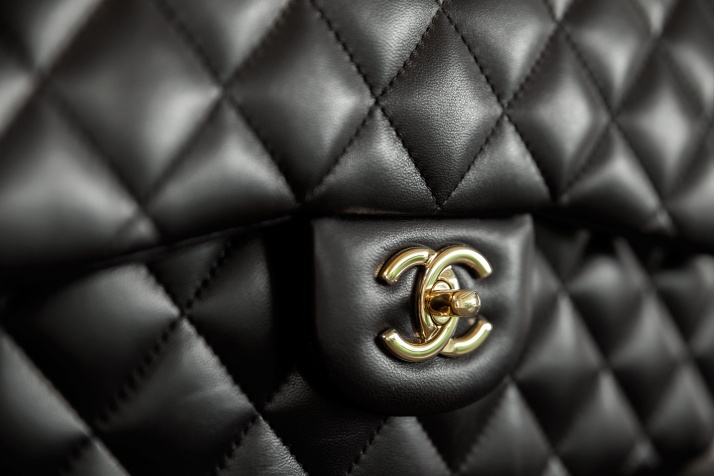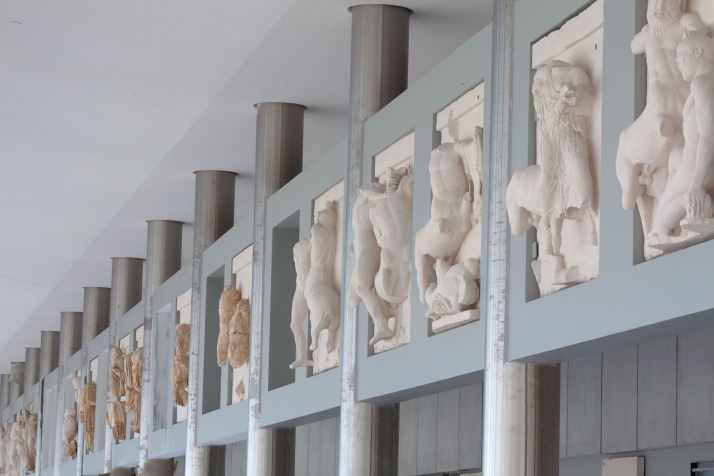Tucked away in sleepy Keramikos, the Benaki Museum of Islamic Art is the crown jewel of a quaint, multi-cultural neighborhood that includes the Beth Shalom synagogue, one of the few hammam baths in the city and the charming Psaropoulos Museum of Traditional Pottery. Formerly part of the flagship Benaki Museum on Koumbari Street, this dazzling collection – which is among the top 10 of its kind in the world – only found a home of its own in 2004. Stretching across four floors of a fully renovated 19th Century edifice, the seed was first planted when founder Antonis Benakis began acquiring oriental treasures while still living in Cairo in the early 1900s.
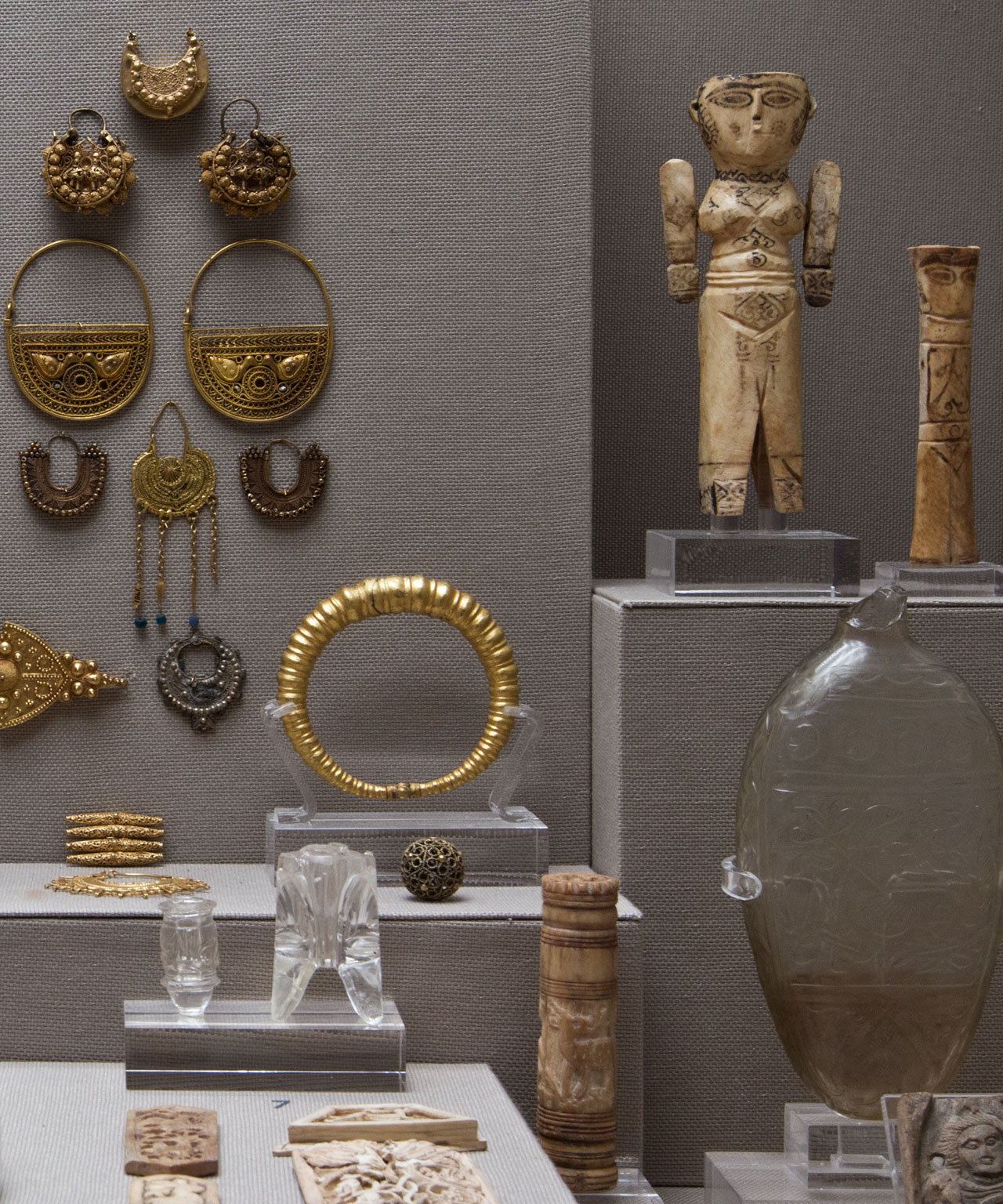
Jewellery and ivory carvings from Egypt, Syria and Iran, 8th-12th c. Photo © Costas Voyatzis.
Islamic art is a diverse term, covering a number of countries and nationalities, so you can expect to see artifacts from all over the world, mainly focusing on Arabic, Persian and Turkish heritage, where the Islamic faith was prevalent. Exhibits (ceramics, gold, metalwork, textiles, glass, furniture and weaponry) date from the 8th to the early 20th Century and largely fall into two categories: the Aniconic, which was purely religious and where human and animal figures were forbidden, and art meant for the palace where illustration plays a key role. The Museum itself doesn’t have a specifically allocated space for itinerant exhibitions, which means that visiting artworks blend with the permanent collection in a constant dialogue.
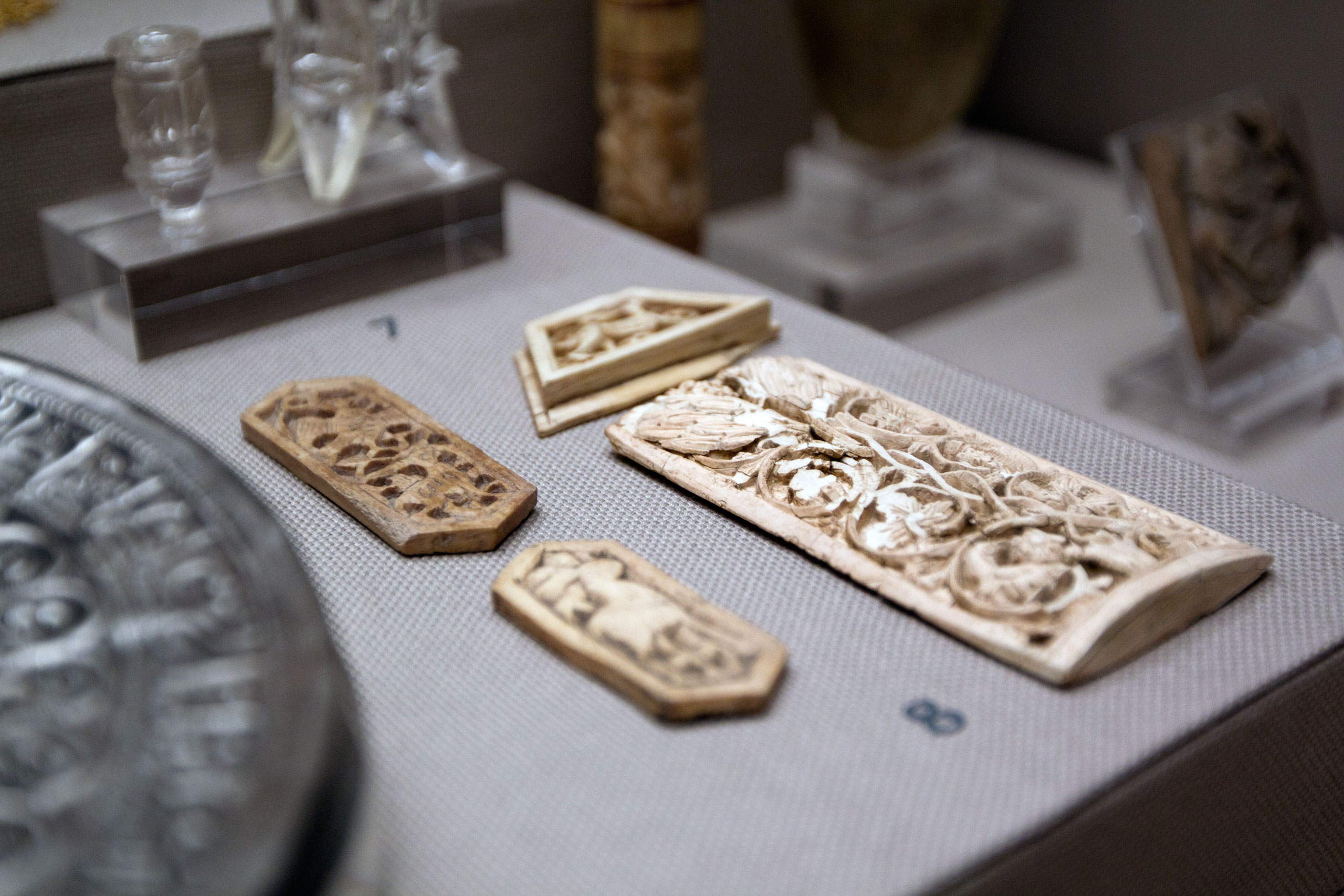
Ivory decorative panels from Egypt, 8th-10th c. Photo © Costas Voyatzis.
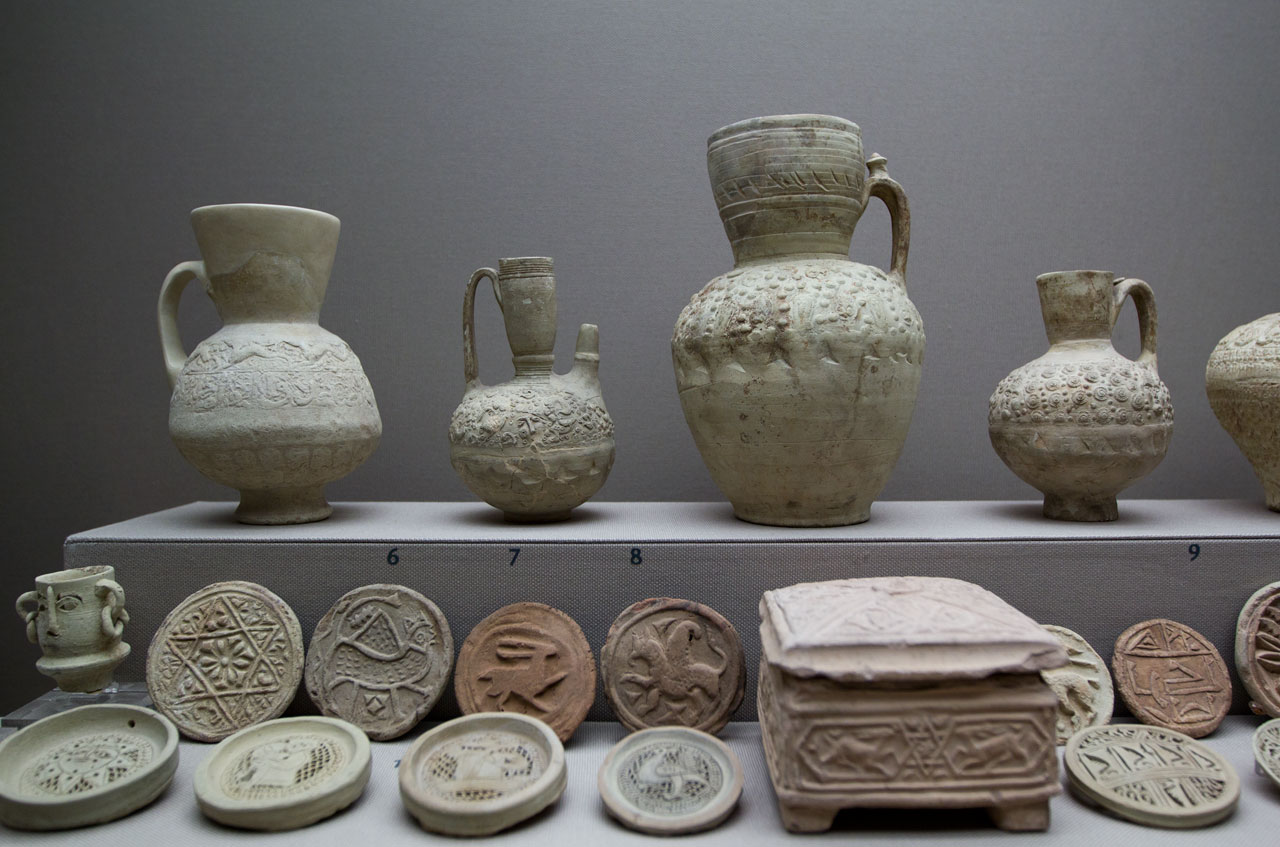
Jugs, filters and stamps from Northern Syria or Egypt, 11th-13th c. Photo © Costas Voyatzis.
But the biggest surprise must be the top floor where artist Navine G. Khan-Dossos has created a veritable oasis, entirely covering the Museum Café interior with an expansive floor-to-ceiling mural entitled “Imagine a Palm Tree”. Paying tribute to the capital’s decimated palm trees, removed from the urban landscape of Athens as a way of visually re-orientating the city towards Europe rather than the Middle East, this incredible installation feels both familiar and exotic, epitomizing the Museum’s East-meets-West sensibilities. As for its breathtaking view over the archaeological site of Keramikos, well, that deserves a write-up of its own!
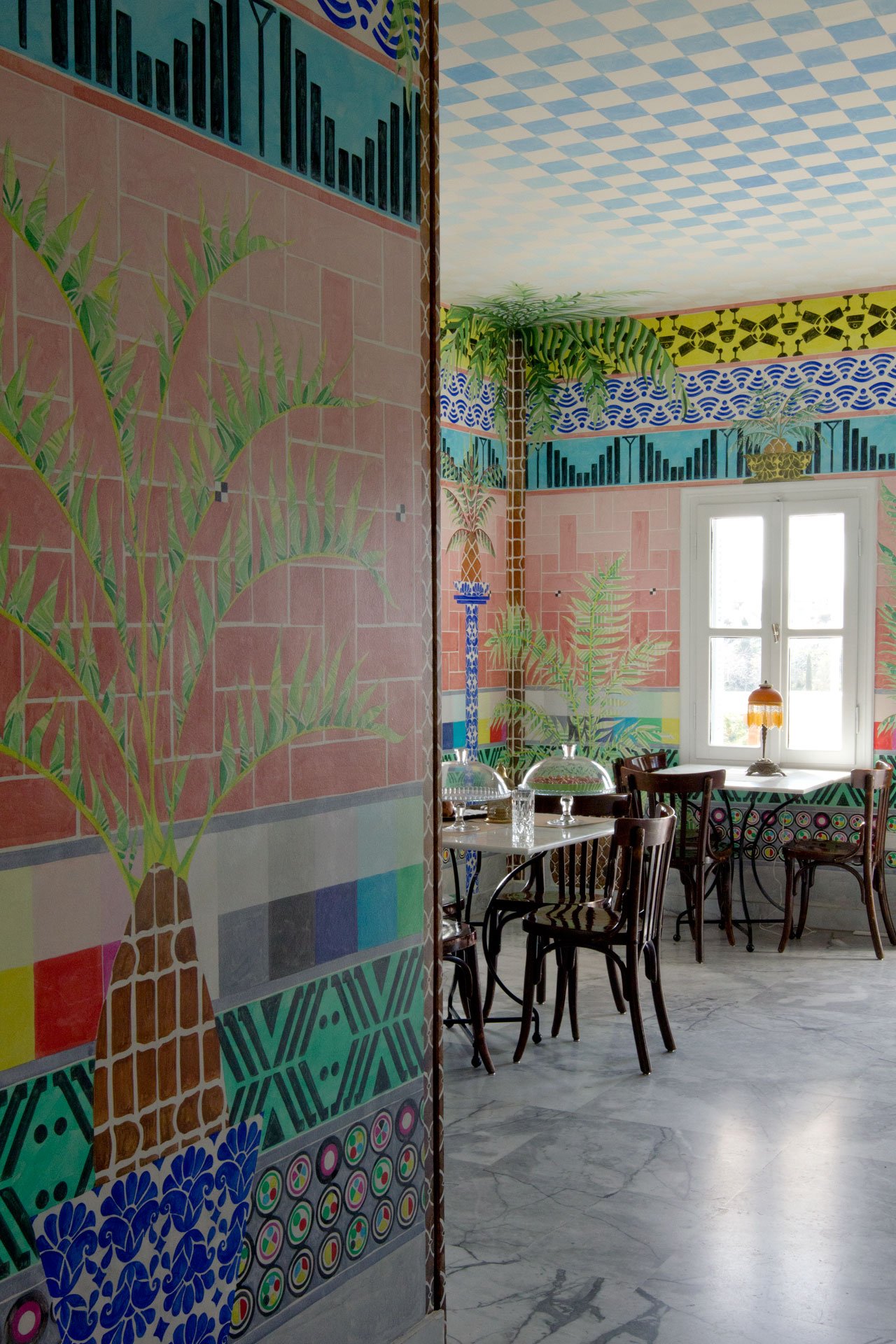
The café on the top floor of the museum. Photo © Costas Voyatzis.


